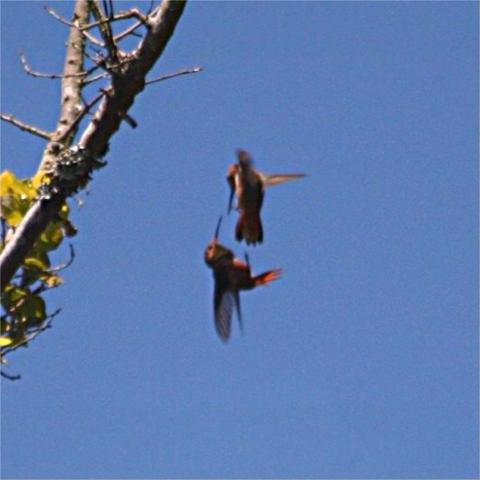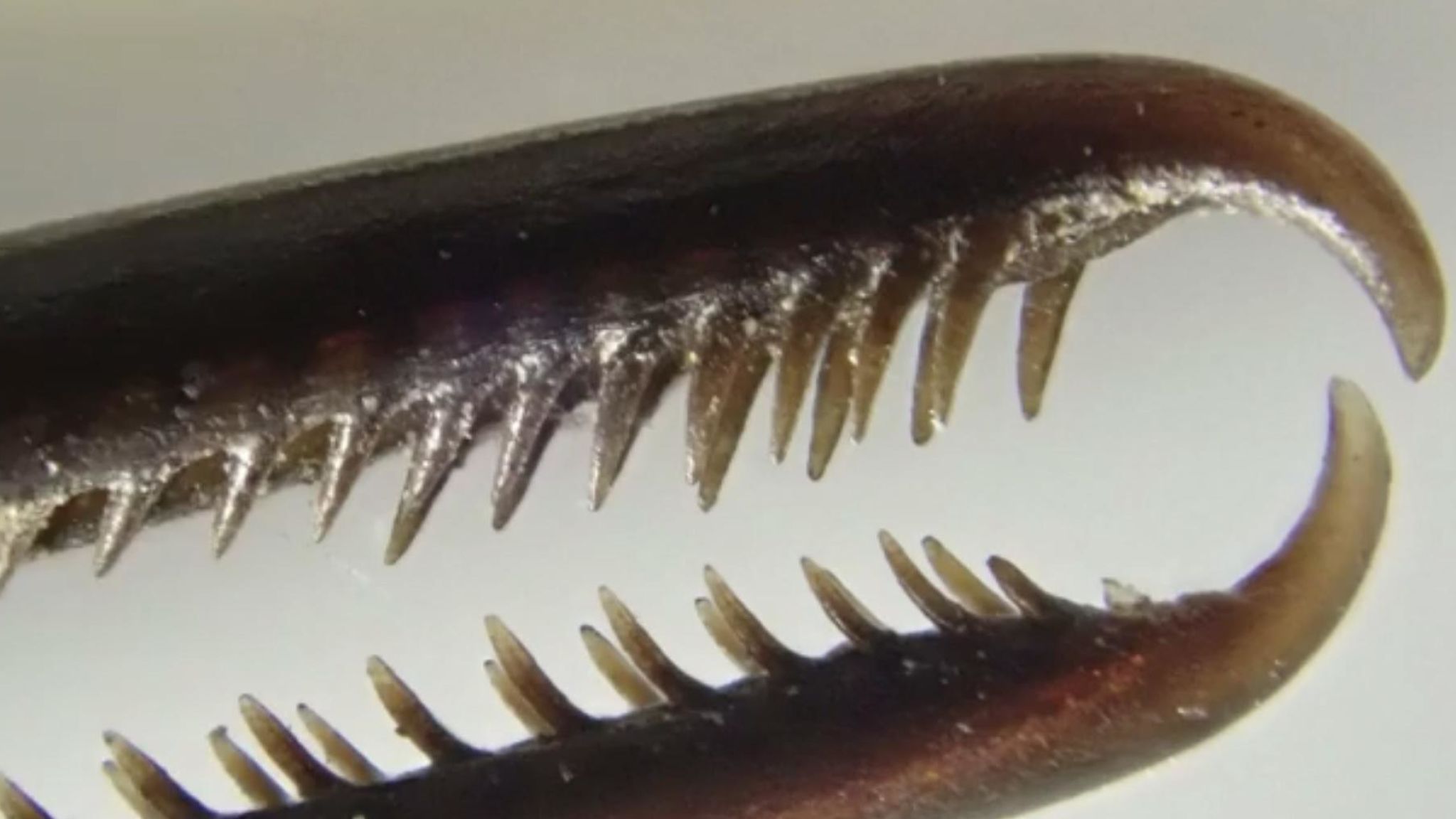 Hummingbirds fight; that’s obvious to anyone who has watched them at a hummingbird feeder. And their bills are made for fighting as well as feeding. The bills are long and sharp and can be use to thrust, parry, and pluck the feathers of an opponent. They are also made for sucking up nectar. Fighting is most intense in the spring when males are establishing territories and competing for females. Males tend to be more aggressive but females can be a little feisty when they are on their nests. (See nesting hummingbird cam )Hummingbirds don’t really want to fight, that’s a last resort. So they will call first, making buzzing or chirping noises. And they will increase the intensity of the sound to increase their aggressive stance. While the sounds of hummingbirds are not exactly considered music, they definitely have a language all of their own. It would be more appropriate to call them chirps then it would be to call it music. However, by listening and learning what the hummingbirds are saying, you can tell what they are doing without looking directly at them. Check out the World of Hummingbirds for more information.
Hummingbirds fight; that’s obvious to anyone who has watched them at a hummingbird feeder. And their bills are made for fighting as well as feeding. The bills are long and sharp and can be use to thrust, parry, and pluck the feathers of an opponent. They are also made for sucking up nectar. Fighting is most intense in the spring when males are establishing territories and competing for females. Males tend to be more aggressive but females can be a little feisty when they are on their nests. (See nesting hummingbird cam )Hummingbirds don’t really want to fight, that’s a last resort. So they will call first, making buzzing or chirping noises. And they will increase the intensity of the sound to increase their aggressive stance. While the sounds of hummingbirds are not exactly considered music, they definitely have a language all of their own. It would be more appropriate to call them chirps then it would be to call it music. However, by listening and learning what the hummingbirds are saying, you can tell what they are doing without looking directly at them. Check out the World of Hummingbirds for more information.
Then they might display their colors like the gorget, the patch of iridescent colors on the throat. They will also puff themselves up by raising their feathers, wings, and tail and then start chasing the intruder. Fighting is a last resort. But to protect their resources, be it flower nectar, their female, their nest, or their young, they will defend themselves or attack, as the case may be.
If hummingbirds are fighting at your feeder, add more feeders to increase their resources and spread the population of the little guys out. The best way to do this is to put all the feeders close to each other. If you spread them out all you are doing is providing more battle zones. Cluster them together. When all the birds are in one area it’s harder for one bird to dominate. Some species are more domineering than others. The Rufous Hummingbird will dominate Anna’s, Broad-tailed, Calliope and Black-chinned hummingbirds, for example.
Deep in the jungles of South America, competition between hummingbirds can be fierce, with as many as 15 different species swashbuckling over the same resources.

Many of these species have had to evolve specialized beaks that do far more than suck nectar; they must also fend off competitors, both for food and for mates. Read more and see video here
One of the reasons they fight so much is to defend their food supply. Eating their weight in insects and nectar every day takes a lot of work, especially when your wings are beating at 100 flaps per second. If we wanted to take on as much sugar water as hummingbirds do, we would have to drink one can of cola every minute – and not put on any weight. We wish.